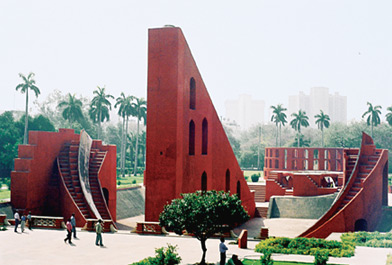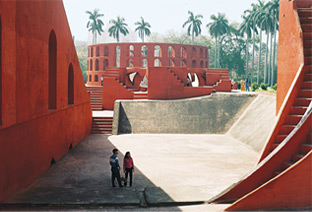Science meets architecture
|
|
|
A step away from the cars scuttling down the streets of Delhi, precisely arranged on a tame green lawn, is what looks like a giant's playground.
Twin cylinders squat at the far end. A pole stands at the center of each, matching the windowed cylinders' radii and heights. Their shadows fall across the floor's slender wedges, where minutes and degrees mark the lunar calendar.
Nearby, twin bowls carved in marble host a celestial map. A giant sundial, cradled in a quadrant, soars above it all.
This is Delhi's Jantar Mantar, one of four remaining observatories in towns across northern India, and a site visited by physicists who were in India for an International Linear Collider Global Design Effort meeting.
The buildings date to the 1720s, when Jai Singh II ruled Amber, India. Singh commissioned the brick and marble observatories to measure time, create astronomical tables, and predict the movements of celestial bodies–which also meant predicting eclipses.
The advent of small brass instruments made this massive masonry obsolete before the first brick was laid. Today, it offers a glimpse of India's early efforts to bridge science and architecture.
Krista Zala
Click here to download the pdf version of this article.








